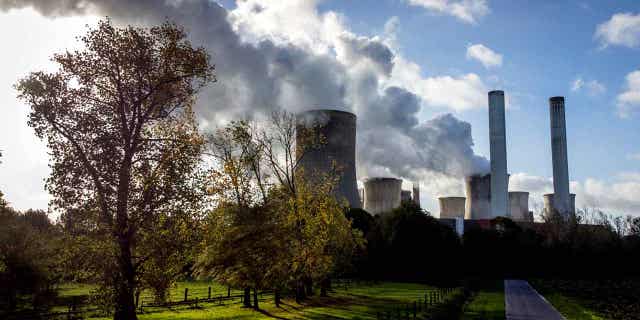The cause of global warming is showing no signs of slowing as heat-trapping carbon dioxide in Earth’s atmosphere increased to record highs in its annual Spring peak, jumping at one of the fastest rates on record, officials announced Monday.
Carbon dioxide levels in the air are now the highest they’ve been in more than four million years because of the burning of oil coal and gas. The last time the air had similar amounts was during a less hospitable hothouse Earth before human civilization took root, scientists said.
The National Oceanic Atmospheric Administration announced that the carbon dioxide level measured in May in Hawaii averaged 424 parts per million. That’s 3 parts per million more than last year’s May average and 51% higher than pre-industrial levels of 280 ppm. It is one of the largest annual May-to-May increases in carbon dioxide levels on record, behind only 2016 and 2019, which had jumps of 3.7 and 3.4 parts per million.
“To me as an atmospheric scientist, that trend is very concerning,” said NOAA greenhouse gas monitoring group leader Arlyn Andrews. “Not only is CO2 continuing to increase despite efforts to start reducing emissions, but it’s increasing faster than it was 10 or 20 years ago.”
Carbon dioxide levels are rising so that each year is higher than the last. However, there’s a seasonal cycle with carbon dioxide so that it reaches its highest saturation point in May. That’s because two-thirds of the globe’s land is in the Northern Hemisphere and plants suck carbon dioxide out of the air, so during late spring and summer carbon dioxide levels fall until they start rising again in November, Andrews said.

Steam rises from a coal-fired power plant in Niederaussem, Germany, on Nov. 2, 2022. The burning of oil, coal, and gas has caused carbon dioxide levels to jump at rapid rates over the years. (AP Photo/Michael Probst, File)
Carbon dioxide levels rise more during El Niño climate cycles because it is drier in the Northern Hemisphere. An El Niño is brewing. That 3.0 increase may be a sign of an El Niño bump, she said.
NEWSOM PUSHES SWEEPING GREEN-ENERGY RULES BUT ‘CAN’T EVEN KEEP THE LIGHTS ON’ TODAY, EPA BOSS SAYS
Because of that “we are still dealing with CO2 in the atmosphere that was emitted in the early-to-mid 20th century,” University of Oklahoma meteorology professor Jason Furtado, who wasn’t part of the monitoring teams, said in an email. “This is why we have to see emissions DROP in order to have a chance to reverse climate change. And even if/when we reverse the CO2 emissions rate, it will take some time before the climate system responds.”
This year NOAA had a complication in its reading.
NOAA and the Scripps Institution have two distinct monitors that have slightly different measurements. Scripps measured 423.8 parts per million and often runs a bit below NOAA. Both have been at the remote Mauna Loa volcano for decades but last November’s eruption cut off power to the NOAA monitor and it’s been unable to use it since. NOAA established another one at Mauna Kea Volcano, 21 miles away.
CLICK HERE FOR THE FOX NEWS APP
Temperatures were higher with similar amount of carbon dioxide in the air because carbon dioxide traps heat for so long and millions of years ago the build up of carbon dioxide was much more gradual, allowing heat to build and ice to melt to raise seas, scientists said.
“We are absolutely at levels unseen in human civilization,” Furtado said. “Humans are running a massive experiment on the Earth climate system via burning carbon, and the results are turning out not great for a lot of people on this planet.”

